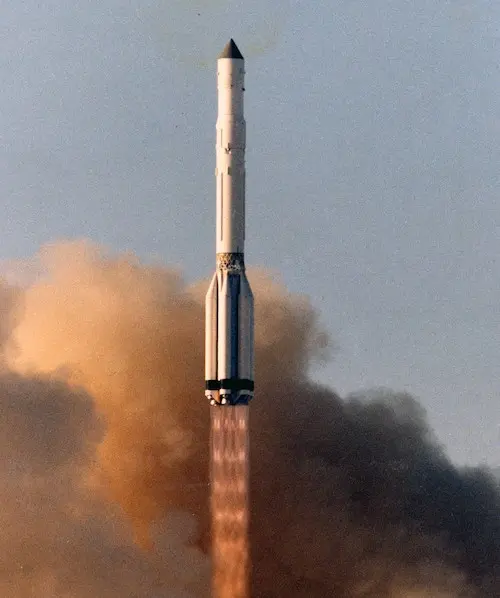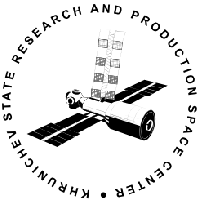Granat
Launch Success
Liftoff Time (GMT)
20:20:57
Friday December 1, 1989
Mission Details
Granat
Originally called Astron 2, Granat was an X- and gamma-ray astronomical observatory studying high energy emissions from galactic and extra-galactic sources. It was launched from Tyuratam by a four-stage Proton-K Blok-D-1 booster. The observatory was based on the main bus design of earlier Venera and Vega missions. It was cylindrical, about 4 m long and 2.5 m in diameter. Two solar panels extended from either side of the main body. Mass was about 4 metric tons, with 2.3 metric tons of experiments. The major experiment was a French Sigma coded-mask gamma radiation telescope. It measured 3.5 m by 1.2 m diameter and had a 4.45 by 4.20 deg. field of view. The satellite also carried a spectroscope and an X-ray imaging telescope. The astrophysics payload was developed in cooperation with France, Bulgaria and Denmark. The mission was expected to last 18 months, however, lengthy ground delays may have reduced its on-orbit life to eight months.
Highly Elliptical Orbit
1 Payload
4,000 kilograms
Rocket


Manufacturer
KhrunichevRocket
Height: 56.14m
Payload to Orbit
LEO: 19,000 kg
GTO: 9,000 kg
Liftoff Thrust
9,468 Kilonewtons
Fairing
Diameter: 3.9m
Height: 10.4m
Stages
4
Launch Site
Stats
Proton-K
176th
Mission
9th
Mission of 1989
Khrunichev State Research and Production Space Center
2330th
Mission
71st
Mission of 1989
1989
97th
Orbital launch attempt